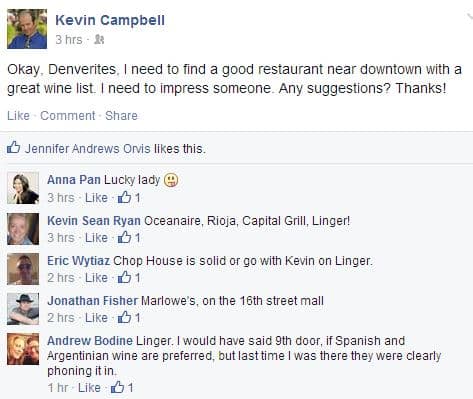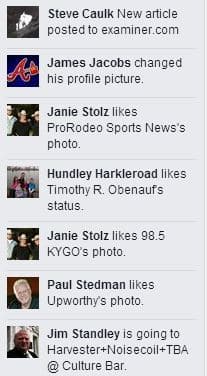Chances are, if you are in a room full of people, half of them have made a referral on social media.
Whether it be for a restaurant…

…or a doctor…

…or a book, or a movie…
Referrals vs Social Referrals
We should begin by differentiating what businesses see as “referrals” from what social media marketing firms typically call, “social referrals.” Because most Facebook page followers expect to receive special offers, social media marketing agencies combine social media advertising with coupons, contests and sweepstakes to drive what we call, “social referral traffic.”
Social referral traffic is visits to a website generated by social media activity. While this may be a means to an end, businesses are more directly interested in getting business referred by their current customer base. These are, invariably, the “best” leads for any business because they involve little to no comparison shopping and the prospect has been pre-qualified by the referrer.
Social Media’s Inherent Advantage
Activity on social networks is increasingly apparent. Facebook, especially, provides updates on our friends and what they like, comment on, click on, where they are, where they are going…

Any visual linking of a friend’s name with a brand name or event serves as a tacit endorsement and generates a stronger proclivity for recognition, recall and consideration than an impression of the brand name alone. This is a business’s reward for making its social assets a destination and generating engagement with them.
Some facts about social referrals:
Consumers are 71% more likely to make a purchase based on social media referrals.
- We trust the people with whom we’ve chosen to connect on social networks. They are friends, family, respected colleagues. We believe they know us, are like us, and have our best interests at heart.
- It’s also very easy to use the online channel to verify the referral. 50 percent of people referred via an Internet social network will visit the referred business’s social site first. That is often the first inclination the referred party gets about the business’s approach and attitude toward customer service. 78 percent of respondents to a 2012 Forbes Magazine survey said companies’ social media posts impacted their purchase decisions.
74% of consumers rely on social networks to guide purchase decisions.
- On average, 8 different forms of media are used to research a single purchase decision.
- Digital channels, including social media, are part of virtually all of them.
Social media is, at is core, talking. It’s any number of conversations eschewing the limitations of geography and chronology. One of every seven minutes Americans spend online is spent on Facebook. Social media is a source of referrals because, in large part, everyone is there and looking for ways to connect and get thanked.
Basic Truths about Referrals
Why do people refer? In 2007, Duct Tape Marketing author John Jantsch stated, “People refer people, products, services and companies because they like to, it makes them feel good, it’s just human nature.” In short, the referral is much more for and about the referrer than the referred.
Webolutions frequently counsels our clients about our N.U.D.E. Model for generating referrals:
Novelty – Is the experience I have with you better than my expectations?
Utility – Do those in my network have a need for your services?
Dependability – Am I sure those in my network will have the same experience I had?
Economy – Is your offering (the service and the experience) a good value?
Webolutions assigns a score to each of these areas based on the client experience. The higher the overall N.U.D.E. score, the more likely a business is to receive referrals.
Look again at the restaurant referral example above. Notice how one respondent calls out a place for a lack of dependability. That’s one trick about the N.U.D.E. score: Dependability is either a 100 or a zero.
Social Media’s Inherent Limitations
A company’s online reputation is usually a reflection of its offline reputation. No amount of unique content and superlative responses on social channels can overcome problems of culture or operational capacity. Social media can should be is a part of a company’s N.U.D.E. experience (or the lack thereof) but if product or service quality is failing, the best it can do is mitigate the damage.
Those most active on social media and the most engaged with the social channel will not necessarily be the most influential. Regarding the question of, “Why do people refer?” Jantsch advises, “The far better question is, ‘Who do people refer?” It’s generally accepted that 15 to 20 percent of a business’s most loyal customers drive 80 to 85 percent of its referrals.
How to Use This Information
The objective, then, is to identify a business’s most influential customers and drive engagement with them on social channels.
Tactics such as referral programs, properly constructed, promoted and rewarded, can amplify social media’s role in generating customer referrals—but again, these are only parts of a larger plan.
Join us!
This will be the topic for the April 18, 2014, installment of our Denver Social Media for Business Meetup group, which in its fifth year is one of the largest Social Media for Business Meetups in the world. Denver marketers, executives and business owners are encouraged to attend. There is no cost to attend and breakfast is provided.
Sources: Forbes, SproutSocial, Hubspot, Knowledge Networks


